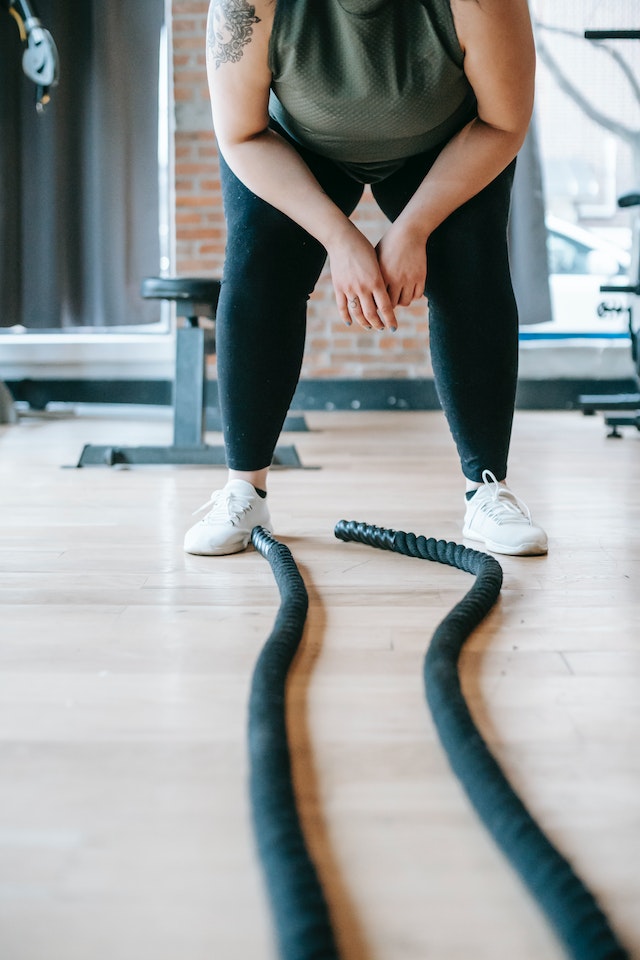Are you tired of feeling like your fitness goals are out of reach? Do you find yourself struggling to stay motivated or unsure if the effort you’re putting in is making a difference? The answer may lie in tracking your progress. From improving performance to staying on track with nutrition, monitoring your progress can be a powerful tool for reaching your fitness goals faster. In this post, we’ll explore how tracking can help you achieve success and provide practical tips for getting started on the path to a stronger, healthier you. So let’s dive in!
What is tracking progress?
When it comes to fitness, progress is key. But what does tracking progress actually mean? Tracking progress simply means monitoring the changes in your body over time, so that you can see how well your fitness program is working. This can be done by taking measurements (like weight, body fat percentage, or waist circumference), or by keeping track of other markers (like how many reps you can do of a certain exercise, or how long you can hold a plank).
Why is tracking progress important? Because it allows you to adjust your program as needed, so that you can continue making progress towards your goals. If you’re not seeing the results you want, tracking progress can help you figure out why and make changes accordingly. For example, if you’re not losing weight, you may need to increase the intensity of your workouts or cut back on calories. On the other hand, if you’re seeing good results but then suddenly plateau, tracking progress can help you identify what’s changed so that you can keep moving forward.
In short, tracking progress is an essential part of any successful fitness journey. It will help you stay motivated and on track, and ultimately reach your goals faster.
The benefits of tracking progress
There are many benefits to tracking your progress when working towards fitness goals. It can help you stay motivated, see your progress over time, and set new goals as you reach old ones.
Tracking your progress can help you stay motivated because it allows you to see how far you’ve come. When you can look back and see how much progress you’ve made, it can give you the boost you need to keep going. It also allows you to see where you need to improve and what areas you might be struggling with.
Seeing your progress over time is also a great way to stay on track. If you only focus on the end goal, it can be easy to get discouraged if you don’t see results right away. But when you track your progress, you can see small improvements week after week, which will keep you motivated and moving in the right direction.
Finally, tracking your progress can help you set new goals as old ones are reached. This keeps things interesting and helps ensure that you’re always making progress towards your overall fitness goals. As your fitness level improves, you can set higher goals and challenge yourself in new ways.
How to track your progress
If you’re looking to get fit, one of the best things you can do is track your progress. This will help you see how far you’ve come and keep you motivated to continue reaching your goals.
There are a few different ways you can track your progress. One way is to simply keep track of your workouts in a journal or on your computer. Write down what exercises you did, how long you did them for, and how many reps you did. This will give you a good idea of your progress over time.
Another way to track your progress is to take measurements of yourself regularly. Measure your waist, hips, and thighs, and weigh yourself every week or two. This will let you see if you’re losing fat or gaining muscle.
Finally, take pictures of yourself regularly. This is especially important if you’re trying to lose weight. Seeing the changes in your body can be a great motivator to keep going.
So start tracking your progress today and see how quickly you can reach your fitness goals!
The best ways to measure your progress
One of the most motivating factors in working out is seeing progress. Unfortunately, progress isn’t always easy to measure. Depending on your fitness goals, there are a number of different ways you can track your progress and see results.
If you’re trying to lose weight, one way to measure your progress is by tracking your body fat percentage. You can do this via a skinfold test, which measures the thickness of skinfold at various points on your body, or by using a DEXA scan (dual-energy X-ray absorptiometry), which gives a more accurate reading of overall body composition.
If you’re trying to gain muscle, you can track your progress by taking measurements of your waist, chest, arms, and legs. You can also keep track of how much weight you’re lifting in the gym and aim to increase that amount over time. Another way to measure muscle growth is by tracking changes in body circumference (using a tape measure) or changes in girth (using calipers).
If you’re training for a specific event or race like a marathon or triathlon, you can track your progress by recording the distance and time it takes you to complete each workout session. You can also keep track of how quickly you recover from hard workouts and compare that with previous recovery times. And lastly, if you’re just trying to improve your overall fitness level, you can track things
How often should you track your progress?
If you want to see results from your fitness routine, it’s important to track your progress. Doing so can help you stay motivated and on track to reach your goals.
But how often should you track your progress? The answer may depend on your goals and what type of exercise you’re doing.
If you’re trying to lose weight or build muscle, you may need to track your progress more frequently. This is because changes in body composition can happen slowly over time. Weighing yourself or measuring your body fat percentage once a week or every two weeks can help you see if you’re making progress.
If you’re mostly focused on improving your cardiovascular fitness or endurance, tracking your progress may not be as necessary. This is because these types of improvements can be easier to measure and tend to happen more quickly than changes in body composition. For example, if you’re running, you may be able to tell that you’re getting faster or that you can run for longer periods of time without getting tired.
No matter what type of exercise you’re doing, it’s important to listen to your body and pay attention to how you feel. If you start feeling overly tired, sore, or injured, it’s possible that you’re overtraining or not giving yourself enough recovery time between workouts. In these cases, it’s best to take a step back and reassess your training program.
In general, tracking your progress every 4-6 weeks is a good guideline
Conclusion
Tracking progress is one of the most effective ways to stay motivated and reach your fitness goals faster. By taking the time to write down your workouts, you can easily see how far you’ve come and what changes need to be made in order to reach your target. When paired with a consistent exercise routine and healthy diet, tracking progress is an invaluable tool that can help you stay on track towards achieving maximum results. Give it a try today, and see just how quickly you can transform yourself into a fitter version of yourself!










